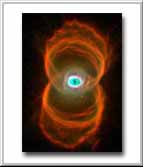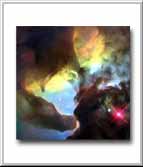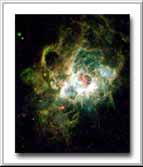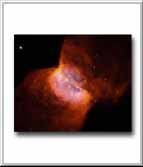|
  ----------------------------------------------------------- ----------------------------------------------------------- 
 Astronomy
Astronomy 

 Some Qur'aanic Verses & Astronomical
Discoveries
Some Qur'aanic Verses & Astronomical
Discoveries
 Facts From
Astronomy
Facts From
Astronomy
  ----------------------------------------------------------- ----------------------------------------------------------- 
 Some Qur'aanic Verses &
Astronomical discoveries
Some Qur'aanic Verses &
Astronomical discoveries 
  Professor Yoshihide Kozai: I say, I am very much impressed by finding true astronomical facts in the
Qur'aan.
Professor Yoshihide Kozai: I say, I am very much impressed by finding true astronomical facts in the
Qur'aan. 
 Dr. Kozai is Professor Emeritus at
Tokyo University, Hongo, Tokyo, Japan, and was the Director of the
National Astronomical Observatory, Mikata, Tokyo Japan. We presented to him a number of Qur'aanic verses describing the beginning of creation and the heavens, and which deal with the relationship of the earth to the heavens. After studying these verses,
Professor Kozai asked us about the Qur'aan and about the time when the Qur'aan was revealed. We informed him that it was revealed 1400 years ago, and then we asked him about the facts which these verses contained. After each answer we would show him the Qur'aanic text. He expressed his astonishment, saying that this
Qur'aan describes the universe as seen from the highest point, everything seen is distinct and clear. He who said this sees everything in existence. Seen from such a point, there is nothing which can be unseen. Dr. Kozai is Professor Emeritus at
Tokyo University, Hongo, Tokyo, Japan, and was the Director of the
National Astronomical Observatory, Mikata, Tokyo Japan. We presented to him a number of Qur'aanic verses describing the beginning of creation and the heavens, and which deal with the relationship of the earth to the heavens. After studying these verses,
Professor Kozai asked us about the Qur'aan and about the time when the Qur'aan was revealed. We informed him that it was revealed 1400 years ago, and then we asked him about the facts which these verses contained. After each answer we would show him the Qur'aanic text. He expressed his astonishment, saying that this
Qur'aan describes the universe as seen from the highest point, everything seen is distinct and clear. He who said this sees everything in existence. Seen from such a point, there is nothing which can be unseen.
 We asked him whether at some point in time the
firmament was in a form of smoke. He stated that all signs and indications are converging to prove that at one point in time the whole firmament was nothing but a cloud of smoke. This has come to be established as a proven visible fact.
Scientists now can observe new stars forming up out of that smoke, which is the origin of our universe, as we see in this picture (Figure 17.1). We asked him whether at some point in time the
firmament was in a form of smoke. He stated that all signs and indications are converging to prove that at one point in time the whole firmament was nothing but a cloud of smoke. This has come to be established as a proven visible fact.
Scientists now can observe new stars forming up out of that smoke, which is the origin of our universe, as we see in this picture (Figure 17.1).

 Fig. 17.1 Fig. 17.1
 This picture was obtained only recently with the help of the spaceship. It shows one of the stars as it forms up out of the smoke. Look at the outer reddish parts of the smoke as it begins to
heat and cluster. And look at the center of the cloud and how the smoky matter is of such high density that it becomes irradiant. The illuminating stars we see today were, just as was the whole universe, in that smoke form.
We presented to him the Qur'aanic verse saying: This picture was obtained only recently with the help of the spaceship. It shows one of the stars as it forms up out of the smoke. Look at the outer reddish parts of the smoke as it begins to
heat and cluster. And look at the center of the cloud and how the smoky matter is of such high density that it becomes irradiant. The illuminating stars we see today were, just as was the whole universe, in that smoke form.
We presented to him the Qur'aanic verse saying:
 Then he turned to the sky, and it had been (as) smoke (dukhaan): He said to it and to the earth: come you together, willingly or unwillingly. They said: we do come (together) in willing obedience. (Qur'aan 41:11).
Then he turned to the sky, and it had been (as) smoke (dukhaan): He said to it and to the earth: come you together, willingly or unwillingly. They said: we do come (together) in willing obedience. (Qur'aan 41:11).
 Some scientists describe this dukhaan or
smoke “mist”. But Professor Kozai pointed out that the term “mist” does not correspond to the description of this smoke, because mist is characteristically cold, whereas this cosmic smoke is somewhat hot. Dukhaan indeed is made up of diffused gases to which solid substances are attached, and this is the exact description of the smoke from which the universe emerged even before the stars were formed. Professor Kozai said that because that smoke was hot, we cannot describe it as “mist”. Dukhaan is the best descriptive word that can ever be. In this way
Professor Kozai continued to scrutinize each Qur'aanic verse we presented to him. Some scientists describe this dukhaan or
smoke “mist”. But Professor Kozai pointed out that the term “mist” does not correspond to the description of this smoke, because mist is characteristically cold, whereas this cosmic smoke is somewhat hot. Dukhaan indeed is made up of diffused gases to which solid substances are attached, and this is the exact description of the smoke from which the universe emerged even before the stars were formed. Professor Kozai said that because that smoke was hot, we cannot describe it as “mist”. Dukhaan is the best descriptive word that can ever be. In this way
Professor Kozai continued to scrutinize each Qur'aanic verse we presented to him.

 17.2 17.2
 Finally we asked him: ‘What do you think of this phenomenon which you have seen for yourself, namely, that science is beginning to discover the secrets of the universe, whereas many of these secrets have already been revealed in the Qur'aan or in the Sunnah? Do you think that the Qur'aan was given to the
Prophet Muhammad Finally we asked him: ‘What do you think of this phenomenon which you have seen for yourself, namely, that science is beginning to discover the secrets of the universe, whereas many of these secrets have already been revealed in the Qur'aan or in the Sunnah? Do you think that the Qur'aan was given to the
Prophet Muhammad  (sallAllahu ‘alaihi wa sallam) from a human source?’
(sallAllahu ‘alaihi wa sallam) from a human source?’
 Professor Kozai replied: "I say, I am very much impressed by finding true astronomical facts in
Qur'aan, and for us modern astronomers have been studying a very small piece of the universe. We have concentrated our efforts for understanding of a very small part. Because by using telescopes, we can see only very few parts of the sky without thinking about the whole universe. So, by reading
Qur'aan and by answering to the questions, I think I can find my future way for investigation of the universe." Professor Kozai replied: "I say, I am very much impressed by finding true astronomical facts in
Qur'aan, and for us modern astronomers have been studying a very small piece of the universe. We have concentrated our efforts for understanding of a very small part. Because by using telescopes, we can see only very few parts of the sky without thinking about the whole universe. So, by reading
Qur'aan and by answering to the questions, I think I can find my future way for investigation of the universe."

 Fig. 17.3 Fig. 17.3
 Professor Kozai believes it is impossible that the Qur'aan was from a human source. He further stated that we scientists in our studies concentrated only on a small area, but if we read the Qur'aan, then we will see a much larger picture of this universe. Scientists have to look at it in a panorama, not within limited and narrow perspectives.
Professor Kozai acknowledges relating to the Cosmos, he is now able to define his way in the future. He states that, from now on, he will plan his research guided by the comprehensive
Qur'aanic view of the universe. Professor Kozai believes it is impossible that the Qur'aan was from a human source. He further stated that we scientists in our studies concentrated only on a small area, but if we read the Qur'aan, then we will see a much larger picture of this universe. Scientists have to look at it in a panorama, not within limited and narrow perspectives.
Professor Kozai acknowledges relating to the Cosmos, he is now able to define his way in the future. He states that, from now on, he will plan his research guided by the comprehensive
Qur'aanic view of the universe.
 Glory to You O Lord, may You be exalted! This is the ever-lasting miracle which renews itself. This is a miracle which gives life and which convinces Muslims and Non-Muslims, and which will convince all generations until the Day of Judgment. Allah Glory to You O Lord, may You be exalted! This is the ever-lasting miracle which renews itself. This is a miracle which gives life and which convinces Muslims and Non-Muslims, and which will convince all generations until the Day of Judgment. Allah said in the Qur'aan: said in the Qur'aan:
 But Allah
But Allah bears witness that what He has sent unto thee He has sent with His (own) knowledge. (Qur'aan 4:166). bears witness that what He has sent unto thee He has sent with His (own) knowledge. (Qur'aan 4:166).

 And say: Praise be to Allah
And say: Praise be to Allah , Who will soon show you His signs, so that you shall know them. (Qur'aan 27:93). , Who will soon show you His signs, so that you shall know them. (Qur'aan 27:93).

  ----------------------------------------------------------- ----------------------------------------------------------- 
|